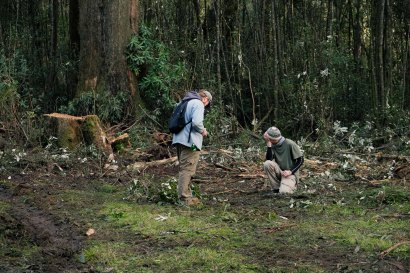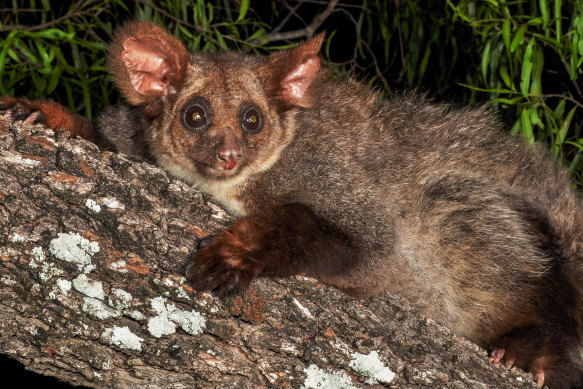
Greater gliders – scientific name Petauroides volans – are now so rare that the species was in 2022 listed as endangered, a classification the federal government gives to animals at imminent risk of extinction in the wild.
Environmental Justice Australia special counsel Danya Jacobs said the destruction of habitat critical for endangered species was clearly breaking federal environment laws designed to protect greater gliders and Leadbeater’s possums.

Conservationists discovered a dead greater glider beneath felled trees in the Yarra Ranges National Park.
“Destroying scores of ancient hollow-bearing trees home to critically endangered Leadbeater’s possums and endangered greater gliders, and killing those species in the process, is plainly illegal under federal environment law, and it has to stop,” Jacobs said.
Environmental Justice Australia wrote to federal Environment Minister Tanya Plibersek and Victorian Environment Minister Steve Dimopoulos on Wednesday, detailing allegations that the Forest Fire Management Victoria operations are in contravention of the Environment Protection and Biodiversity Conservation Act 1999.
The act requires the referral, assessment and approval of all operations likely to have “significant impacts” on listed threatened species.
“We specifically told the government that greater gliders were nesting in this tree,” Wildlife of the Central Highlands spokesperson Blake Nesbit said.

Greater gliders were in 2022 listed as endangered.Credit: Wayne Tindall
“This is disgraceful, and has to stop. Even when notified of the presence of a federally listed threatened wildlife, the information was ignored – with deadly consequences.”
Forest Fire Management Victoria chief fire officer Chris Hardman said every effort was made to minimise impacts on flora and fauna.
“We ... follow a rigorous planning and approvals process to ensure we’re consistent with the Forests Act, Flora and Fauna Guarantee Act and Wildlife Act,” Hardman said.
Loading
“These fuel breaks are critical to enable firefighters to carry out back-burning in the event of a major bushfire, protect Melbourne’s main water supply and prevent or lessen the impact of large-scale bushfires that can lead to mass wildlife deaths.”
WWF conservation scientist Dr Kita Ashman said hollow trees were “like gold” for forest-dwelling mammals like greater gliders. “Hollows can take hundreds of years to form and without hollows greater gliders and many other threatened species simply can’t survive,” she said.
“It’s outrageous that despite warnings these trees had precious, occupied hollows, they were levelled anyway and at least one glider killed. A tree planted right now will not have a usable greater glider hollow in our lifetime. It’s no wonder we face an extinction crisis.”









 Add Category
Add Category